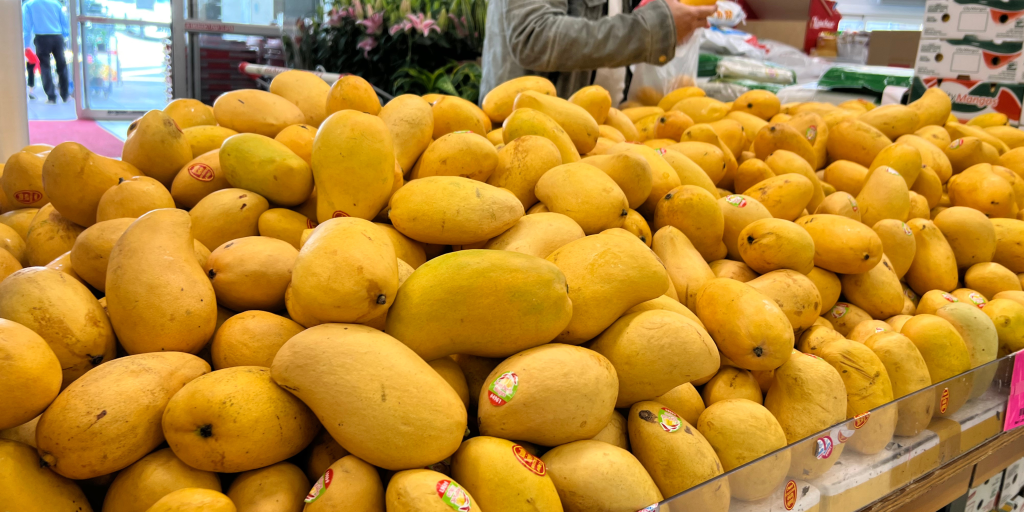The Ultimate Guide to Pick Perfect Ataulfo Mangoes for Your Next Grocery Haul
You walk into Hen Long and the first thing you see are these gorgeous Ataulfo Mangoes inviting you to pick up a few for your healthy afternoon snacks.
Ataulfo mangoes, also known as Champagne or Honey mangoes, are prized for their buttery texture, sweet flavor, and vibrant color. These tropical delights are a favorite among fruit enthusiasts, but selecting the best ones can be a bit tricky. Fear not! In this comprehensive guide, we’ll walk you through everything you need to know to pick the juiciest, ripest Ataulfo mangoes for your next grocery trip.
Depending if you’re eating them right away or in a couple days, you should pick a few with varying levels of ripeness so that you can enjoy these juicy treats when you want them at their optimal ripeness.

1. Look for Color and Texture:
When selecting Ataulfo mangoes, pay close attention to their color and texture. A ripe Ataulfo mango will have a rich golden-yellow hue with minimal green undertones. Avoid mangoes with wrinkled skin, as this indicates overripeness. Instead, opt for mangoes that yield slightly to gentle pressure when squeezed, indicating they are ripe and ready to eat.
2. Sniff Test:
Give the mango a gentle sniff near the stem end. A ripe Ataulfo mango will emit a sweet, fruity aroma, signaling optimal ripeness. If there is little to no scent, the mango may need more time to ripen. However, if it smells fermented or overly strong, it may be overripe.
3. Check for Blemishes:
Inspect the mango for any blemishes or soft spots. While minor imperfections are normal and do not affect the taste or quality of the fruit, large bruises or soft areas may indicate spoilage. Choose mangoes that are firm and free from significant blemishes for the best eating experience.
4. Consider Weight:
Heftiness is another indicator of a ripe Ataulfo mango. Pick up the mango and assess its weight. A ripe mango will feel heavy for its size due to its high water content. Lighter mangoes may be underripe and lack the sweet, juicy flavor characteristic of Ataulfo mangoes.
5. Know the Season:
Ataulfo mangoes are typically in season from March to July, with peak availability in April and May. Shopping for mangoes during peak season increases your chances of finding perfectly ripe specimens. However, you can still enjoy Ataulfo mangoes later in the season, as they tend to ripen well off the tree.
6. Plan for Ripening:
If you can’t find ripe Ataulfo mangoes at the grocery store, don’t despair. Purchase firm mangoes and allow them to ripen at home. Place the mangoes in a paper bag at room temperature and check them daily for ripeness. Once ripe, store them in the refrigerator to slow down the ripening process and prolong freshness.
Conclusion:
With these simple tips, you’ll be able to confidently select the freshest, ripest Ataulfo mangoes every time you visit the grocery store. Whether you enjoy them fresh, in smoothies, or as a topping for salads and desserts, Ataulfo mangoes are sure to add a burst of tropical flavor to your culinary creations. Happy mango hunting!